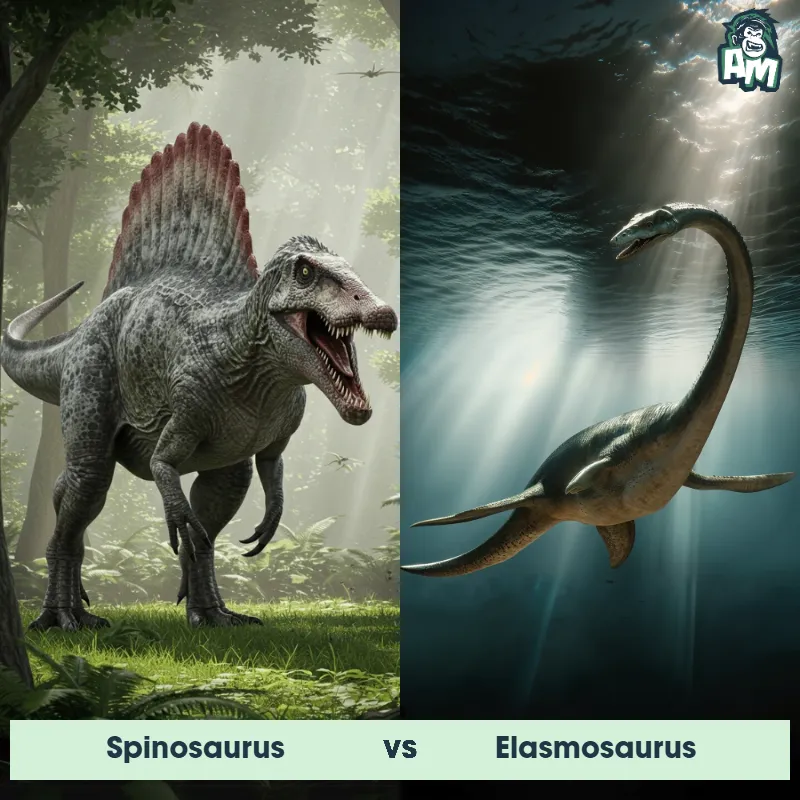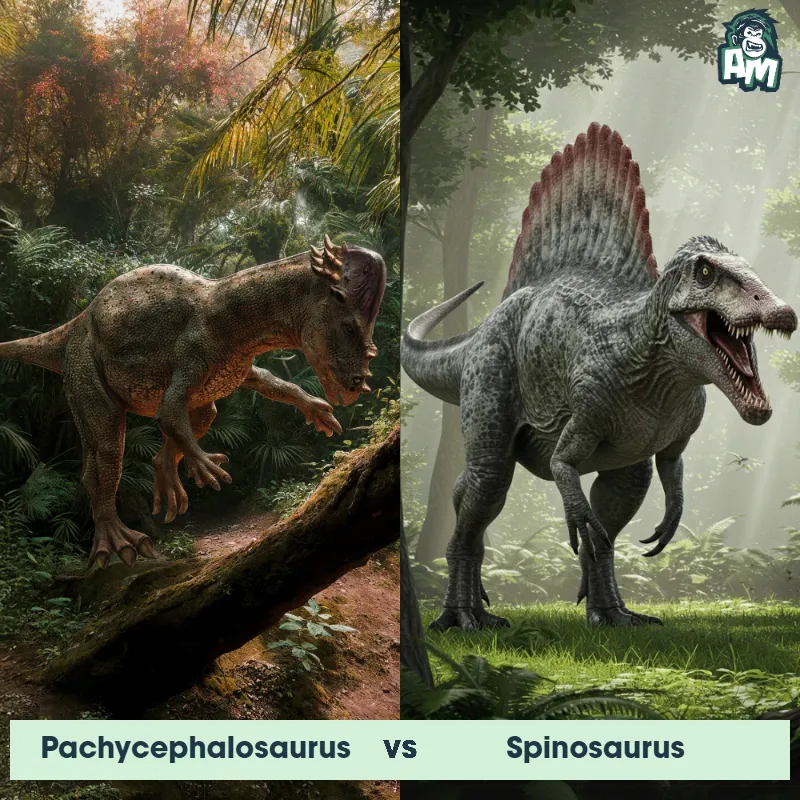The Spinosaurus
The Spinosaurus, also known as the "spine lizard," was a carnivorous dinosaur that lived during the Cretaceous Period. It is famous for its sail-like structure on its back, made up of elongated spines supported by bony extensions. With a length reaching up to 50 feet, it was one of the largest predatory dinosaurs, primarily known for its piscivorous diet, indicating it mainly fed on fish.

| Spinosaurus | |
|---|---|
| Size | Up to 7 feet (2.1 meters) tall |
| Weight | Up to 8 tons (7,300 kilograms) |
| Speed | 14-17 mph (22-28 km/h) |
| Key Strength | Powerful forelimbs |
| Biggest Weakness | Vulnerable belly area |
| Scientific Name | Spinosaurus aegyptiacus |
| Family | Spinosauridae |
| Habitat | Semi-aquatic environments |
| Geography | North Africa |
| Diet | Fish and other prey |
| Lifespan | 20 years - 30 years |

The Spinosaurus
The Spinosaurus, also known as the "spine lizard," was a carnivorous dinosaur that lived during the Cretaceous Period. It is famous for its sail-like structure on its back, made up of elongated spines supported by bony extensions. With a length reaching up to 50 feet, it was one of the largest predatory dinosaurs, primarily known for its piscivorous diet, indicating it mainly fed on fish.
Fun Fact: Spinosaurus had a unique adaptation - its long, slender skull which allowed it to catch fish, similar to modern-day crocodiles.
| Spinosaurus | |
|---|---|
| Size | Up to 7 feet (2.1 meters) tall |
| Weight | Up to 8 tons (7,300 kilograms) |
| Speed | 14-17 mph (22-28 km/h) |
| Key Strength | Powerful forelimbs |
| Biggest Weakness | Vulnerable belly area |
| Scientific Name | Spinosaurus aegyptiacus |
| Family | Spinosauridae |
| Habitat | Semi-aquatic environments |
| Geography | North Africa |
| Diet | Fish and other prey |
| Lifespan | 20 years - 30 years |
Spinosaurus Matchups
We use AI to simulate matchups between the Spinosaurus and other animals. Our simulation considers size, strength, and natural predatory behaviors to determine the most likely outcome.
Spinosaurus: Diet, Predators, Aggression, and Defensive Behaviors
What did Spinosaurus eat?
Spinosaurus was believed to have been a piscivorous dinosaur, meaning it primarily fed on fish. Fossil evidence suggested that its long, crocodile-like snout was well-suited for catching and consuming fish. However, due to its large size and potentially diverse habitat, Spinosaurus may have also consumed other prey such as small dinosaurs or carrion.
Did Spinosaurus have any predators?
As apex predators of their time, Spinosaurus likely had few natural predators. However, juvenile or sickly individuals may have been vulnerable to larger carnivorous dinosaurs such as Tyrannosaurus rex. In general, adult Spinosaurus would have been formidable enough to deter most potential threats.
Was Spinosaurus aggressive?
While little is known about the behavior of Spinosaurus, its size and predatory adaptations suggest that it was a formidable and potentially aggressive predator. It likely exhibited aggressive behavior when hunting for food or defending its territory from rivals.
Did Spinosaurus fight?
Spinosaurus may have engaged in intraspecific competition, especially during mating or territorial disputes. The presence of the sail on its back has led scientists to hypothesize that it could have been used in displays to intimidate rivals or attract mates. Physical combat between individuals is plausible, but there is limited direct evidence to confirm this behavior.
How did Spinosaurus defend themselves?
Spinosaurus likely relied on its size, strength, and adaptations for hunting and swimming as its primary means of defense. Its sharp teeth, powerful jaws, and potentially aggressive behavior would have deterred most predators. Additionally, its ability to swim proficiently would have allowed it to escape danger by taking to the water.
What was Spinosaurus' biggest weakness in a fight?
Due to its primarily aquatic lifestyle, Spinosaurus may have been less agile on land compared to some of its terrestrial dinosaur counterparts. This could have been a weakness if it needed to defend itself from quicker or more maneuverable predators on land. Additionally, like many large predators, injury or illness could have significantly weakened a Spinosaurus in a fight.
Fun Fact: Spinosaurus is known to have spent a significant amount of time in the water, possibly using its sail-like structure to regulate body temperature while hunting underwater.
Fun Fact: Some researchers believe that Spinosaurus was capable of both walking on land and swimming in water, making it a versatile predator in its ecosystem.



















